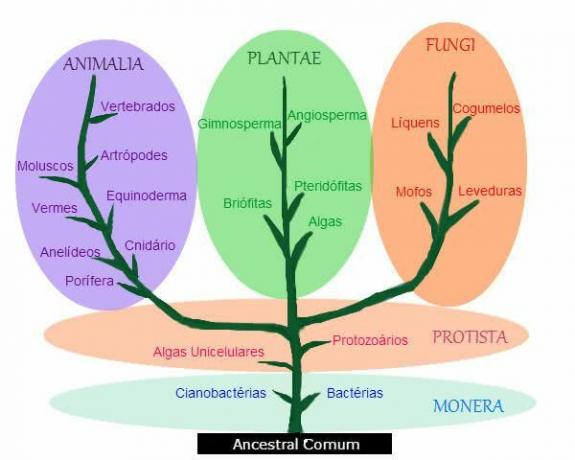O sensory system it integrates a part of the nervous system and is formed by a set of organs that have sensory receptors capable of identifying and transmitting stimuli.
Therefore, the function of this system is to capture stimuli, both from the external environment and from the body itself, and convert them into electrical impulses that are forwarded to the central nervous system. This information is interpreted and transformed into sensations, as a response after processing the received stimuli.
Examples of types of stimuli captured by the sensory system are: touch, pressure, temperature, chemicals, light and pain.
Organs and senses of the sensory system
You Sensory organs skin, tongue, eyes, nose and ear are responsible, respectively, for the sensory senses touch, taste, sight, smell and hearing.
the eyes and the vision
The eyes are organs responsible for the sense of sight through the reception of light stimuli.
The eyes receive light and information is processed in the retina, where the cone photoreceptors are located. interpret colors and hues, and rods that are sensitive to light intensity and allow us to see with low luminosity. The optic nerve transmits information to the brain, which processes the image we see.
Learn more about eyes and the eyesight.
the skin and touch
The skin is the largest organ in the human body and is mainly responsible for the sense of touch through the reception of tactile stimuli.
There are nerve corpuscles in the dermis, the layer below the epidermis, which identifies temperature (thermoreceptors), touch and pressure (mechanorepectors) and pain (nocireceptors).
Some receptors and specific sensations identified in the skin are:
- Meissner receivers: capturing light touches
- Merkel discs: tactile and pressure sensitivity
- Krause receivers: cold capture
- Ruffini receivers: heat capture
- Vater Pacini Receivers: Identify Vibratory Stimuli
- Free nerve ending: capture mechanical, thermal and painful stimuli
Learn more about tact.
the nose and the smell
The nose is responsible for the sense of smell through the reception of olfactory stimuli and through this we can perceive and distinguish odors.
Chemoreceptor cells located in the olfactory epithelium are able to identify chemical substances present in the environment. Moisture inside the nose is needed to dissolve these particles.
The receptor organ for smell can vary according to species. Insects, for example, use their antennas to pick up stimuli.
Learn more about smell.
the tongue and the taste
The tongue is responsible for the sense of taste or taste through the reception of stimuli that make us differentiate flavors.
Chemoreceptor cells are present in the taste buds and identify sweet, salty, sour, bitter and umami taste. Smell is also fundamental for the perception of flavors, as is saliva that dissolves substances and temperature.
Water, for example, is considered an insipid substance, as it does not trigger any sensation on the palate.
Learn more about taste.
the ear and hearing
The ear is responsible for the sense of hearing through the reception of sound stimuli.
Sound is converted into stimuli that will be forwarded to the central nervous system. Sound waves cause the cilia on the hair cells in the inner ear to vibrate and through the auditory nerve convey information to the brain.
Learn more about hearing.
How does the sensory system work?
The central nervous system is formed by the spinal cord and the brain, the latter receiving the information captured from receptors in Organs sensory organs.
Receptors can be formed by nerve endings of neurons, cells of the nervous system, or by specialized epithelial cells and are classified into three types:
- Exteroceptors: capture external stimuli to the body, such as cold, heat and pressure.
- Interoceptors: capture internal body stimuli such as pH, blood pressure and osmotic.
- Propioceptors: they are located in the muscles, ligaments, joints and tendons, thus enabling the position to be perceived.
In animals, the stimuli that will be transformed into neural signals are captured by receptors, which regarding the type of stimulus can be:
- Mechanoreceptors: activated by mechanical stimuli such as pressure and touch.
- Thermoreceptors: activated by temperature variation.
- Chemoreceptors: activated by chemical substances.
- Photoreceptors: activated by light.
- Nocireceptors: activated by pain.
Get more knowledge by reading about:
- human body senses
- human body systems
- Parts of the human body



